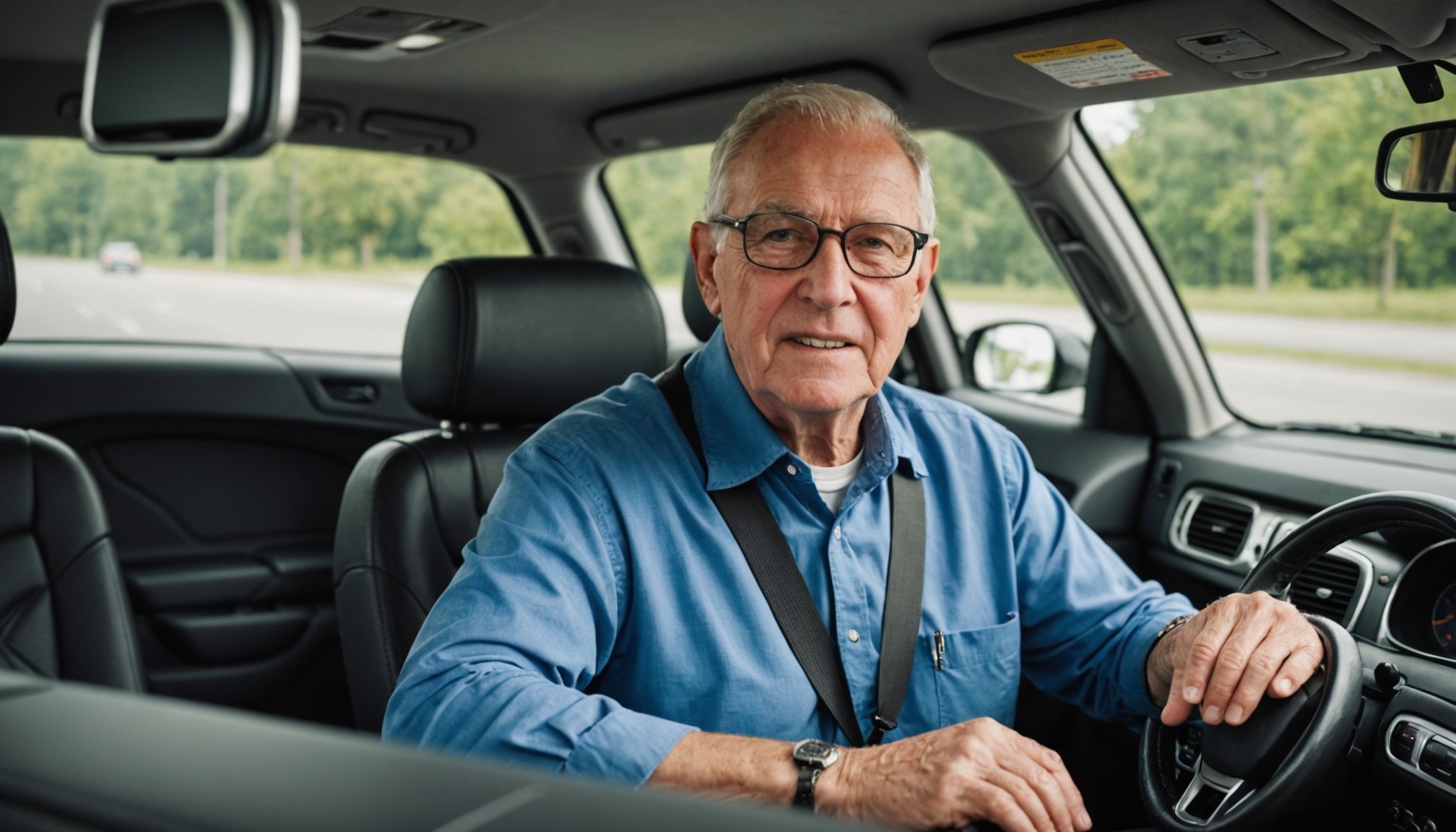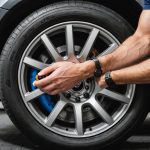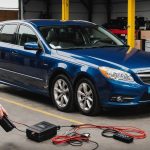Essential Safety Features to Look for When Selecting a Vehicle for Senior Drivers
When it comes to choosing a vehicle for senior drivers, safety is paramount. As people age, their physical and cognitive abilities can change, affecting their driving skills. Here’s a comprehensive guide to help you select a car that meets the unique needs of older drivers, ensuring their safety and comfort on the road.
Enhancing Visibility for Older Drivers
Visibility is a critical factor in safe driving, and it becomes even more important as we age. Here are some features to look for in a vehicle to enhance visibility for older drivers:
In parallel : What safety precautions should I take when driving in heavy rain?
Adjustable Seats and Steering Wheels
Adjustable seats and steering wheels can significantly improve a driver’s view of the road. These features allow the driver to position themselves at an optimal height and distance from the steering wheel, reducing strain and improving visibility. For example, power-adjustable seats with lumbar support can help older drivers find a comfortable driving position, reducing the risk of back pain on longer drives[1].
Large, Clear Mirrors
Large, clear mirrors are essential for reducing blind spots and enhancing overall visibility. Look for vehicles with auto-dimming rearview mirrors and side mirrors with blind spot monitoring. These features can help reduce glare from headlights behind you and alert you to vehicles in your blind spot, making lane changes and merging much safer[1].
Also read : What are the best practices for safely sharing the road with cyclists?
Example Vehicles
Cars like the Toyota Camry and Subaru Outback, which are often recommended for senior drivers, come equipped with these visibility-enhancing features. The Toyota Camry, for instance, offers adjustable seats and a steering wheel, along with large, clear mirrors that include blind spot monitoring[4].
Advanced Safety Technologies: A Key to Safer Driving for Seniors
Advanced safety technologies can greatly enhance the protection of senior drivers on the road. Here are some key features to consider:
Forward Collision Warning and Automatic Emergency Braking
Forward collision warning systems use sensors to detect potential collisions with vehicles or obstacles in the car’s path. If a risk is detected, the system sends a warning to the driver to take preventive action. If the driver doesn’t respond in time, the automatic emergency braking system steps in and applies the brakes to prevent or lessen the impact of a collision. This feature is particularly beneficial for older drivers who may have slower reaction times[1].
Blind Spot Monitoring and Rear Cross-Traffic Alert
Blind spot monitoring alerts the driver when there is a vehicle in their blind spot, allowing them to change lanes safely. Coupled with rear cross-traffic alert, which warns drivers of approaching vehicles when backing out of a parking space, these technologies can significantly enhance the safety of older drivers. For example, the Honda CR-V, a car highly recommended for seniors, comes equipped with these advanced safety features[4].
Lane Departure Warning
Lane departure warning systems alert the driver if the vehicle drifts out of its lane without signaling. This feature is especially useful for older drivers who might experience cognitive decline or physical limitations that affect their ability to stay within their lane[5].
Comfort and Ease of Access
Comfort and ease of access are equally important when choosing a vehicle for senior drivers. Here are some features to consider:
Power-Adjustable Seats and Low Step-In Height
Power-adjustable seats with lumbar support can help older drivers find the most comfortable driving position. Cars with a low step-in height, such as four-door models, can be much easier for older drivers to get in and out of, particularly for those with mobility issues. The Acura Integra, for instance, offers power-adjustable seats and a low step-in height, making it an excellent choice for seniors[1][4].
Heated Steering Wheel and Keyless Entry
Features like a heated steering wheel and keyless entry can make a significant difference in the overall driving experience for seniors. These conveniences can reduce the physical strain associated with driving and make the vehicle more accessible[1].
Regular Health Check-Ups and Vehicle Maintenance
Ensuring the health and well-being of senior drivers is crucial for their safety on the road.
Health Check-Ups
Regular vision and hearing tests are essential for older drivers. Vision tends to decline with age, making it harder to see peripherally or read road signs and signals. Hearing loss can also make it difficult to detect important sounds like horns or sirens. Encourage regular medical checkups to monitor these changes and discuss any medications that might affect vision, cognition, or reaction time[2][5].
Vehicle Maintenance
Keeping the vehicle in good working order is vital. Advanced safety features in well-maintained vehicles can help older drivers react to hazards more effectively. Choose cars with automatic transmission, power steering, and large mirrors to support easier and safer driving. Regular maintenance checks can also help identify any issues before they become major problems[5].
Assessing Cognitive and Physical Abilities
Assessing the cognitive and physical abilities of senior drivers is a sensitive but necessary step.
Cognitive Decline
Cognitive decline, such as that caused by dementia or other neurological disorders, can severely impact driving ability. Physical conditions, including arthritis or limited mobility, can affect a driver’s ability to steer, brake, and monitor their surroundings. Discussing these limitations with older adults can help determine whether it is safe for them to continue driving[5].
Professional Evaluation
A professional evaluation of driving ability can provide an objective assessment of whether it is safe for the senior to continue driving. This evaluation can also suggest modifications to the vehicle or driving habits to enhance safety. For example, installing a swivel seat or hand controls can better suit older drivers’ needs[5].
Practical Tips for Keeping Elderly Drivers Safe
Here are some practical tips to help keep elderly drivers safe on the road:
Monitor Driving Performance
Regularly accompanying elderly loved ones while they drive can provide insight into their current abilities. Pay attention to signs of unsafe driving, such as difficulty merging, delayed reaction times, or ignoring traffic signals. If these behaviors become consistent, it may be time for a professional evaluation of their driving skills[5].
Avoid Certain Driving Conditions
Seniors should limit driving in the dark as much as possible, especially if their vision is impaired. Avoid driving during peak traffic hours or in adverse weather conditions. These precautions can significantly reduce the risk of accidents[3].
Best Cars for Senior Drivers
When selecting a car for senior drivers, it’s important to choose models that are known for their safety features, comfort, and ease of access. Here are some of the best cars for seniors:
| Car Model | Key Safety Features | Comfort and Accessibility | Fuel Economy |
|---|---|---|---|
| Toyota Camry | Forward collision warning, automatic emergency braking, blind spot monitoring | Power-adjustable seats, heated steering wheel, keyless entry | Up to 28 MPG city, 39 MPG highway[4] |
| Subaru Outback | Lane departure warning, rear cross-traffic alert, adaptive cruise control | Low step-in height, four-door design, power-adjustable seats | Up to 24 MPG city, 32 MPG highway[4] |
| Honda CR-V | Blind spot monitoring, rear cross-traffic alert, automatic emergency braking | Power-adjustable seats, heated steering wheel, keyless entry | Up to 25 MPG city, 31 MPG highway[4] |
| Acura Integra | Forward collision warning, lane departure warning, adaptive cruise control | Power-adjustable seats, low step-in height, four-door design | Up to 26 MPG city, 36 MPG highway[4] |
| Hyundai Palisade | Blind spot monitoring, rear cross-traffic alert, automatic emergency braking | Power-adjustable seats, heated steering wheel, keyless entry | Up to 19 MPG city, 26 MPG highway[4] |
Car Insurance Considerations
Choosing a car with advanced safety features can also impact car insurance premiums. Here’s what you need to know:
Impact on Car Insurance
Vehicles equipped with advanced safety technologies can potentially reduce car insurance premiums. Insurance companies often offer discounts for cars with features like forward collision warning, automatic emergency braking, and blind spot monitoring. For example, the Toyota Camry and Subaru Outback, both highly rated for safety, can help lower insurance costs due to their robust safety features[1][4].
Quotes from Experts
“Advanced safety features in vehicles can significantly enhance the safety of older drivers. These technologies not only protect seniors physically but also financially by potentially reducing car insurance premiums,” says a safety expert from the Insurance Institute for Highway Safety (IIHS).
Selecting the right vehicle for senior drivers involves a careful consideration of safety features, comfort, and ease of access. By prioritizing features that enhance visibility, incorporate advanced safety technologies, and ensure comfort and accessibility, you can help older drivers stay safe and confident on the road.
As Dr. David B. Carr, a geriatrician and expert on older driver safety, notes, “The key to safe driving for seniors is a combination of regular health check-ups, well-maintained vehicles, and the right safety features. By addressing these aspects, we can help older drivers maintain their independence while ensuring their safety.”
By following these guidelines and considering the specific needs and abilities of senior drivers, you can make an informed decision when choosing a vehicle that provides both safety and comfort.
Recommendations for Accessible Vehicle Models
Selecting the best vehicles for seniors is more than just a matter of preference; it’s about ensuring comfort, safety, and accessibility. With numerous options available, finding a vehicle that meets these criteria can be overwhelming. Fear not, we have streamlined a list based on various important aspects for seniors.
Top Recommended Vehicles
When choosing a vehicle, safety is paramount. Brands like Subaru and Toyota offer models such as the Subaru Forester and Toyota RAV4, featuring advanced safety technologies like blind-spot monitoring and automatic emergency braking. These vehicles not only prioritize protection but are also budget-friendly, with pricing starting from moderate ranges depending on the model and optional upgrades.
As you navigate your options, pay attention to features that enhance accessibility. Key highlights include power-adjustable seats, which simplify customization, and wide-opening doors ensuring ease of entry and exit.
Additional Factors to Consider
Easy entry and exit are crucial for seniors. Vehicles with supportive, adjustable seats and clear visibility are recommended. The integration of modern technologies like Bluetooth connectivity and voice-controlled systems can significantly enhance the driving experience.
Remember to evaluate adjustment controls in vehicles, ensuring that the steering wheel and seat settings can be easily adapted to suit individual needs, providing comfort and preventing strain during longer journeys.
Conclusion: Making an Informed Decision
Navigating the journey of vehicle selection demands a focus on informed vehicle selection and safe driving choices. Prioritizing these aspects ensures that senior drivers can enjoy both comfort and safety on the road.
Understanding the essential features tailored to senior drivers allows for a smart investigation into what truly matters in a vehicle. For instance, features such as advanced safety systems with collision warnings, user-friendly control panels, and adjustable seating can enhance the driving experience significantly. These features offer tangible benefits, from improved safety with automated emergency braking to ease of use with integrated navigation systems.
Encouraging discussions around safe driving choices is vital. Evaluating vehicles that provide comprehensive safety tools can lead to greater peace of mind. Seniors should consider the responsiveness of the vehicle’s technology and how it fits within their everyday driving needs.
Ultimately, choosing a vehicle is not just about comfort, but also about ensuring a sustainable and enjoyable driving experience. Allow vital features to guide the informed vehicle selection, promoting confidence and a sense of security on every journey. With these considerations in place, seniors can steer towards a future filled with driving ease and comfort.
Introduction to Vehicle Safety for Senior Drivers
As we age, the need for vehicle safety becomes increasingly important, especially for senior drivers. One of the key aspects to consider is the presence of advanced safety features in modern vehicles. These features can significantly mitigate the risks associated with age-related changes in driving abilities.
Aging can impact vision, reaction times, and cognitive functions, making it vital for seniors to select vehicles equipped with technologies that enhance safety. Features such as automatic emergency braking, blind-spot monitoring, and adaptive cruise control can provide an additional layer of security. These systems are designed to assist in critical situations, potentially preventing accidents before they occur.
The vehicle selection process for senior drivers should focus on models that offer comprehensive safety packages. It’s essential to evaluate vehicles based on their specific safety features tailored to address the unique challenges faced by older adults on the road. This process not only ensures peace of mind but also enhances the overall driving experience.
Moreover, understanding how safety features work and can be tailored to an individual’s needs is crucial. Educational resources and test drives can help seniors become familiar with these technologies, enabling them to make informed decisions and appreciate the value they bring to everyday driving.
Essential Safety Features
Safety features are crucial considerations during vehicle selection, especially when addressing senior needs. Prioritising safety not only enhances the driving experience but also boosts confidence for senior drivers.
Advanced Driver Assistance Systems (ADAS)
ADAS functionalities are designed to enhance safety and aid drivers. These systems include lane departure warnings, adaptive cruise control, and automatic emergency braking. For senior drivers, ADAS can significantly reduce the risks associated with driving by providing timely alerts and interventions during critical situations. Vehicles such as the Honda Accord and Subaru Forester are highly recommended, as they come equipped with comprehensive ADAS packages.
Visibility Enhancements
Visibility is a vital component of vehicle safety. Features such as adaptive headlights, which adjust based on traffic patterns and weather conditions, and large side mirrors help improve a driver’s ability to see and be aware of their surroundings. For seniors, superior visibility can prevent accidents and make driving more enjoyable. Cars like the Volvo XC60 and Toyota RAV4 offer excellent visibility options.
Ease of Entry and Exit
Cabin accessibility is a significant concern for seniors. Features like low step-in height and wider door openings facilitate easy entry and exit, reducing physical strain. Vehicles like the Kia Soul and Ford Escape are designed with these aspects in mind, ensuring a comfortable and accessible experience for senior drivers.
Evaluating Vehicle Safety in Real-World Scenarios
When test driving a vehicle, real-world assessment is crucial to understanding its safety features. Start by focusing on practical scenarios like parking and merging. These situations often reveal how intuitive and reliable safety systems are.
Safety evaluation isn’t solely about sophisticated technology; it includes observing how the vehicle handles basic tasks. For instance, when parking, notice the visibility and sensor responsiveness. Do the mirrors provide a comprehensive view, or are there significant blind spots? Safety aids such as parking cameras or automatic braking can enhance maneuvering confidence.
During merging on highways, assess the ease of use of features like lane-keeping aids and adaptive cruise control. Do they provide effective support, or do they feel intrusive and challenging to adjust? It’s crucial these systems offer smooth assistance in maintaining a safe distance and lane position, especially in busy traffic environments.
Additionally, evaluating comfort during a test drive is important. Comfortable vehicles reduce driver fatigue, indirectly promoting safety. Pay attention to seat support, control accessibility, and how these elements contribute to an uninterrupted focus on driving. A well-designed layout with intuitive controls ensures that you remain engaged, alert, and ready to react to unexpected situations on the road.
Additional Tips for Selecting Safe Vehicles
Choosing the right vehicle involves more than just examining specs—it requires a comprehensive safety assessment. Here are some vehicle tips to guide your decision-making process.
Researching Vehicle Reviews
Start by exploring professional reviews and ratings. They are invaluable for gaining insights into a vehicle’s safety features and performance. Websites that aggregate safety ratings, such as those testing crashworthiness, should be prioritized. Additionally, seek out user testimonials, particularly those from senior drivers who can provide first-hand experiences related to comfort and accessibility.
Consulting with Professionals
Professionals can offer essential caregiver advice when it comes to vehicle selection. Automotive experts understand the intricate details of vehicle performance and safety features. Meanwhile, occupational therapists can offer personalized advice tailored to individual needs, ensuring the selected car aligns with the driver’s physical capabilities. Don’t overlook the resources available from senior driving programs, which can offer both guidance and practical tips.
Considering Vehicle Maintenance
Regular maintenance is paramount for vehicle safety. Make sure to select vehicles with features that make maintenance checks straightforward, such as easy-to-access oil dipsticks and fluid reservoirs. Consulting with trusted maintenance services can also provide peace of mind. Ensure that your vehicle remains in top condition with regular check-ups, benefiting from professional insights to enhance both safety and longevity.
Conclusion and Summary
When considering vehicle choices, it’s crucial to focus on features that elevate safety, particularly for senior drivers. As aging can alter driving abilities, selecting a car equipped with advanced safety features ensures a safer experience. These cars often come with adaptive cruise control, lane departure warning systems, and automatic emergency braking. Such technology not only acts as a safeguard but also helps in maintaining confidence behind the wheel.
Senior drivers should prioritize vehicles that offer excellent visibility and are easy to maneuver. Opting for cars with adjustable seats, steering wheels, and simplified control systems can accommodate the physical changes experienced with age, significantly enhancing comfort and safety during driving.
To enhance safety effectively, it is helpful for seniors to:
- Test drive vehicles to assess comfort and control
- Seek models with comprehensive safety summaries
- Consult with family or professionals for recommendations tailored to individual needs
Multi-faceted approaches are vital in reinforcing driving safety for older adults. By making informed vehicle choices with emphasis on these features, seniors can enjoy continued mobility and independence while remaining secure on the road. Thus, ensuring a thoughtful balance of comfort, ease, and protection in their driving journeys.











